Types of Hulls
The most important part of a boat is its hull. When a boat is built, the hull is made first and then everything else is added to it. The shape and type of a boat’s hull determine how the boat handles in different water conditions.
Types of Boat Hulls
Use the information below to choose the kind of boat that best matches your kind of boating. These are the different types of hulls:
Displacement Hulls
This fishing boat is rounded and plows the water out of its way as it moves along. It is designed to cut through the water with very little propulsion.
Advantages: This boat hull provides a stable, smooth ride by plowing through waves.
Disadvantages: Uses more fuel to plow water out of its way, and is slow.
Planing Hulls
This fishing boat is either flat-bottomed or V-shaped in front and flatter toward the back. It is designed to lift the front part of the boat out of the water as it speeds up, letting the boat skim across the water. These boats may operate like displacement hulls when at rest or at slow speeds, but they climb toward the surface of the water as they move faster. Most small, power-driven boats have planing hulls.
Advantages: This boat hull uses less fuel and goes faster because it rides on top of the water instead of plowing through it.
Disadvantages: Rougher, more unstable ride because it bounces on top of waves.
Flat-Bottom Hull
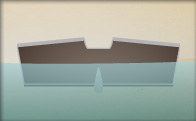
This fishing boat with a flat planing hull is typically found on smaller, open boats and has a shallow draft, which is good for fishing in small lakes, ponds, and slow-moving rivers.
Examples: row boats and dingy boats.
Advantages: This boat hull is very stable in calm weather. This planing hull has a shallow draft, which is good for fishing in small lakes and rivers.
Disadvantages: This fishing boat broad bow area creates a rough ride. Takes more power to move at the same speed as flat bottom hulls. These boats are usually limited to low horsepower motors. May roll or bank in sharp turns.
Multi-Hull
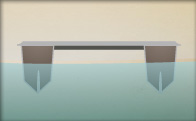
This fishing boat with multi-hulls can describe any boat with more than one hull to use for displacement and planing. The air pocket between the hulls can also help the boat get on plane more easily.
Examples: catamarans and pontoon boats.
Advantages: This boat hull has greater stability because of its wide beam, commonly use two hulls for added stability and for easier traveling through the water.
Disadvantages: Propellers on boats with planing hulls often are not fully submerged, so they need to provide holding ability as well as higher pitch and rake, because of higher top-end speeds. Needs a large area when turning. Hull content courtesy of www.boat-ed.com
Deep-Vee Hull
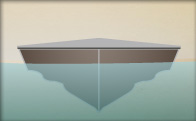
This fishing boat with Deep-Vee Hull is used on boats operated in wavy water or on boats that go farther offshore. This type of hull is probably the most common hull design. Most manufactures of boats built today use modifications of this design.
Examples: power boats and fiberglass motorboats.
Advantages: This fishing boat is easier to maneuver at slow speeds, the Deep-Vee design offers a good ride in rough water as the pointed bow slices forward and the “V” shaped. This planing hull has a shallow draft, which is good for fishing in small lakes and rivers.
Disadvantages: Takes more power to move at the same speed as flat bottom hulls. May roll or bank in sharp turns.
Round-Bottom Hull
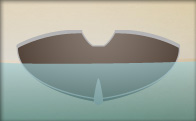
This fishing boat with round-bottom has mostly a displacement hull and is usually used for dinghies, tenders and some car-top boats. The round-bottom hull type gives a soft ride, but rocks back and forth more than a flat-bottomed boat.
Examples: Canoe and kayak.
Advantages: This hull is rounded to allow the boat to travel through water easily at slower speeds to limit the amount of drag on the boat.
Disadvantages: Smaller boats like sailboats and canoes that have a rounded hull can be very unstable. Has a tendency to roll unless it has a deep keel or stabilizers.
Cathedral Hull
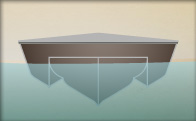
This fishing boat with cathedral-hulls has a distinct modification of the “V” bottom that are called tri-hulls and cathedral hulls.
Examples: modern boats usually power driven.
Advantages: This boat hull style has two or more hulls attached closely together for more stability without extra width. The air pocket between the hulls can also help the boat get on plane more easily.
Disadvantages: It gives a rougher ride in choppy water because of the increased surface at the bow. The side hulls can cause pounding, resulting in a lot of spray. Cathedral Hull content courtesy of www.boatus.org
Learn about different types of engines in our next section.
KEEP LEARNING

How to Tie the Non-Slip Loop Knot
The non-slip loop knot is a popular and reliable choice for securing hooks, lures, and other tackle to your fishing line.
LEARN MORE

Socials
Take me fishing social media links
LEARN MORE

TakeMeFishing x Teen Vogue
Join us on a creative journey as fashion designer Ahmrii Johnson walks us through her collaborative vision and process with Teen Vogue and fashion brand, Rentrayage, to create a special piece.
LEARN MORE


.png?lang=en-US&ext=.png)